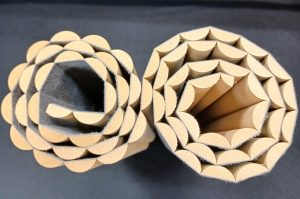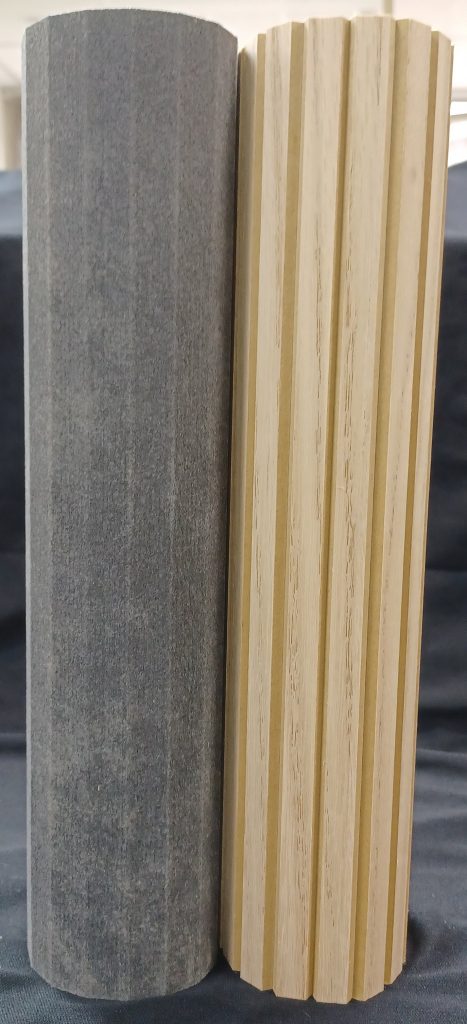2024-09-5
A tambour board is specifically designed to be flexible and rollable, made up of a series of narrow wooden slats or strips attached to a flexible backing material
Tambour board, narrow strips of wood are attached to a canvas or fabric backing to create a flexible surface that can be rolled up or down
Specification sheet of flexible and rollable Tambour Boards
Flexible fluted Half-Round Solid wood or MDF Wood sticks tambour Panel Board
Wood kinds: Solid Red Oak, MDF board
Size: 4 feet X 8 feet (1200 mm x 2400 mm)
Height: 6 mm
Half round stick: 18 mm width
Backing: ECO resin reinforced non-woven fabric backing
Origin: Made in Taiwan
Wood Veneer top flexible grooved wood slats tambour panel board
Wood kinds: Oak, Maple, Cherry, and MDF board
Size: 4 feet X 8 feet (1200 mm x 2400 mm)
Thickness: 3 mm
Flat slat by V-grooved: 13 mm, 43 mm, 67 mm and other widths for special orders
Structure: Top Layer Wood veneer Middle Layer MDF board Bottom Layer ECO resin reinforced non-woven fabric backing or kraft paper
Usages: Interior pole wraps and column covering, wood wall paneling, ceiling, furniture surface covers, flooring, wainscoting, Tambour board, flexible wood board, rollable wood board, wooden slats, wood slats, wood strips, wooden strips
Origin: Made in Taiwan
Flexible and Rollable Tambour Boards for furniture skin and tambour door
“Tambour” can refer to a type of woodworking technique in which narrow strips of wood are attached to a canvas or fabric backing to create a flexible surface that can be rolled up or down
Tambour doors are often used in furniture such as desks, cabinets, and kitchen cupboards tambour door, where they provide a convenient and space-saving way to access the contents inside. They can also be used to conceal electronics such as televisions, where they provide a sleek and minimalist look while allowing easy access to the screen when needed.
If a wooden board is laminated onto a flexible backing material, and then grooved or fluted to allow it to be rolled up and down, it may be considered a form of tambour board even batter then the traditional tambour board.
A traditional tambour board is made up of a series of narrow slats or strips that are individually attached to the flexible backing material, the main characteristic of a tambour board is that it is flexible and can be rolled up and down like a curtain.
If the wooden board has been modified to be able to perform this function, it can be considered a tambour board, even if the construction method is somewhat different from traditional tambour boards made from individual slats or strips. However, it’s worth noting that the term “tambour board” can be used somewhat loosely, and different people or industries may have different interpretations of what constitutes a true tambour board.

Key words: wood strips, wood slats, tambour board, tambour door, flexible wood board, rollable wood board, wooden slats, wooden strips
